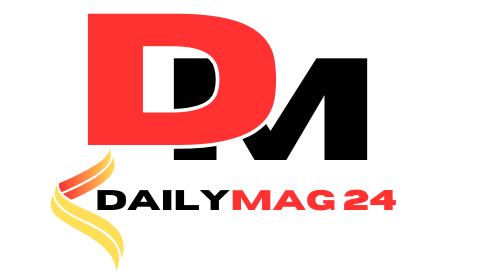In the realm of data integration and transformation, having the right tools at your disposal is critical. Enter SSIS 816, a powerful version of SQL Server Integration Services (SSIS) that stands out as a robust solution for businesses aiming to streamline their data processes. Whether you’re dealing with complex ETL (Extract, Transform, Load) tasks or managing large volumes of data, SSIS 816 offers a comprehensive suite of features designed to enhance efficiency, accuracy, and control. This article delves into the unique capabilities of SSIS 816, showcasing how it can revolutionize your data management practices and empower your organization to handle data with greater agility and precision.
What is SSIS 816?
SQL Server Integration Services (SSIS) is a platform for building high-performance data integration and workflow applications. SSIS 816 is the latest version, offering a wide range of tools for data extraction, transformation, and loading (ETL). It allows users to automate complex business processes and integrate disparate data sources efficiently.
Key Features of SSIS 816
- Improved Performance: SSIS 816 boasts enhanced performance features, allowing for faster data processing and reduced execution time.
- Advanced Data Transformations: The latest version includes new transformation tools that simplify data cleansing, aggregation, and integration tasks.
- Scalability and Flexibility: SSIS816 supports large-scale data integration projects, making it suitable for enterprises of all sizes.
- Better Error Handling: Enhanced error handling mechanisms ensure data integrity and smooth execution of ETL processes.
Getting Started with SSIS 816
Installing SSIS 816
To get started with SSIS 816, you first need to install it on your SQL Server. The installation process is straightforward, but it requires careful attention to detail to ensure all components are correctly configured.
- Step 1: Download the SSIS816 installation package from the official Microsoft website.
- Step 2: Run the installer and follow the on-screen instructions.
- Step 3: Configure the necessary options, such as the installation directory and feature selection.
- Step 4: Complete the installation and restart your system if prompted.
Setting Up Your First SSIS Project
Once SSIS 816 is installed, you can begin creating your first SSIS project. This involves defining the data sources, transformations, and destinations for your ETL process.
- Create a New Project: Open SQL Server Data Tools (SSDT) and select “New Project.” Choose “Integration Services Project” from the available templates.
- Define Data Sources: Add data sources to your project, such as databases, flat files, or cloud storage.
- Design Data Flow: Use the data flow designer to create a sequence of data transformations. Drag and drop various transformation components onto the designer and connect them as needed.
- Configure Data Destinations: Specify where the transformed data should be loaded, such as into a database table or a data warehouse.
SSIS 816 Data Flow Components
Data Sources
SSIS816 supports a wide range of data sources, allowing you to integrate data from various platforms seamlessly. Common data sources include SQL Server databases, Oracle databases, Excel files, and more.
Data Transformations
Transformations are the heart of SSIS816, enabling you to manipulate and process data as it moves through the ETL pipeline. Some of the key transformations include:
- Data Conversion: Convert data types to ensure compatibility between different systems.
- Lookup: Perform lookups to enrich your data with additional information.
- Conditional Split: Split data into multiple streams based on specified conditions.
- Aggregation: Aggregate data to perform summary calculations, such as totals and averages.
Data Destinations
After transforming your data, the final step is to load it into the desired destination. SSIS 816 supports various destinations, including:
- SQL Server: Load data into SQL Server tables for further analysis and reporting.
- Flat Files: Export data to CSV or TXT files for easy sharing and archiving.
- Cloud Storage: Integrate with cloud platforms like Azure Blob Storage for scalable data storage solutions.
Advanced SSIS 816 Techniques
Error Handling and Logging
Effective error handling and logging are crucial for maintaining data integrity and troubleshooting issues in your SSIS packages. SSIS 816 provides robust tools for managing errors and logging events.
- Event Handlers: Use event handlers to capture and respond to runtime events, such as errors or warnings.
- Logging Providers: Configure logging providers to record detailed information about package execution, including errors and performance metrics.
Performance Tuning
Optimizing the performance of your SSIS packages is essential for handling large data volumes efficiently. SSIS 816 includes several features and best practices for performance tuning.
- Parallel Execution: Enable parallel execution to process multiple data flows simultaneously.
- Buffer Management: Adjust buffer sizes to optimize memory usage and improve data throughput.
- Data Flow Optimization: Use transformations that minimize data movement and reduce processing time.
Integrating SSIS 816 with Other Microsoft Tools
Power BI Integration
SSIS 816 seamlessly integrates with Power BI, Microsoft’s powerful data visualization tool. This integration allows you to create rich, interactive reports and dashboards based on your SSIS data.
- Publish to Power BI: Export your transformed data to Power BI for advanced analytics and visualization.
- Data Refresh: Schedule regular data refreshes to ensure your Power BI reports are always up to date.
Azure Data Factory Integration
Azure Data Factory (ADF) is a cloud-based data integration service that complements SSIS 816 by providing scalable data movement and transformation capabilities.
- Hybrid Data Integration: Use ADF alongside SSIS816 to create hybrid data integration solutions that span on-premises and cloud environments.
- Lift and Shift: Migrate your existing SSIS packages to ADF with minimal changes, leveraging the power of the cloud for greater scalability.
Best Practices for SSIS 816
Package Design
Designing efficient SSIS packages is critical for ensuring optimal performance and maintainability. Follow these best practices to create high-quality packages:
- Modular Design: Break down complex ETL processes into smaller, reusable packages.
- Parameterization: Use parameters and variables to make your packages more flexible and configurable.
- Documentation: Document your packages thoroughly to facilitate maintenance and troubleshooting.
Security
Securing your SSIS packages is essential for protecting sensitive data and ensuring compliance with regulatory requirements.
- Encryption: Encrypt sensitive data at rest and in transit to prevent unauthorized access.
- Access Control: Implement strict access controls to restrict who can view and modify your SSIS packages.
- Auditing: Enable auditing to track changes and access to your SSIS packages.
Common Challenges and Solutions in SSIS 816
Data Quality Issues
Ensuring data quality is a common challenge in data integration projects. SSIS 816 offers several tools and techniques to address data quality issues:
- Data Profiling: Use data profiling tasks to analyze and understand your data quality.
- Data Cleansing: Apply data cleansing transformations to correct data errors and inconsistencies.
Handling Large Data Volumes
Processing large data volumes can strain your SSIS packages and lead to performance bottlenecks. SSIS816 includes features to help manage large datasets effectively:
- Partitioning: Partition your data to process smaller, manageable chunks.
- Incremental Load: Implement incremental loading to process only new or changed data, reducing the overall data volume.
Case Studies: SSIS 816 in Action
Enterprise Data Integration
A multinational corporation used SSIS 816 to streamline its data integration processes across various departments. By implementing SSIS816, the company achieved:
- Improved Efficiency: Automated data workflows reduced manual intervention and errors.
- Enhanced Data Quality: Data cleansing transformations ensured high data quality and consistency.
- Scalable Solutions: The flexibility and scalability of SSIS816 allowed the company to handle increasing data volumes with ease.
Data Migration Project
A financial institution undertook a major data migration project using SSIS 816 to move data from legacy systems to a modern data warehouse. Key outcomes included:
- Successful Migration: The project was completed on time and within budget, with minimal data loss or disruption.
- Optimized Performance: Performance tuning techniques ensured the migration process was fast and efficient.
- Comprehensive Logging: Detailed logging provided visibility into the migration process and helped identify and resolve issues quickly.
Future of SSIS 816
Emerging Trends
The future of SSIS 816 looks promising, with several emerging trends set to shape its development and usage:
- Integration with AI and Machine Learning: SSIS816 is expected to incorporate more AI and machine learning capabilities, enabling advanced data analysis and predictive modeling.
- Cloud Adoption: As more organizations migrate to the cloud, SSIS816 will continue to evolve to support seamless cloud integration and hybrid data solutions.
Continuous Improvement
Microsoft is committed to continuously improving SSIS 816, with regular updates and enhancements that address user feedback and industry trends. Users can expect:
- New Features: Ongoing development will introduce new features and tools to enhance data integration and workflow automation.
- Performance Enhancements: Future updates will focus on further optimizing performance and scalability.
- Improved Usability: Enhancements to the user interface and documentation will make SSIS 816 even more user-friendly and accessible.
Also Read: Fapello: The Future of Video Sharing Platforms
Conclusion
SQL Server Integration Services (SSIS) 816 represents a significant advancement in data integration technology. With its robust features, improved performance, and seamless integration capabilities, SSIS 816 is an invaluable tool for data professionals. Whether you’re a beginner or an experienced user, this comprehensive guide provides the knowledge and insights needed to leverage SSIS816 effectively. By following best practices and utilizing the advanced techniques discussed, you can optimize your data integration processes, ensuring efficient, reliable, and high-quality results.
Frequently Asked Questions
What is SSIS 816? SSIS816 is the latest version of SQL Server Integration Services, a powerful platform for building data integration and workflow applications. It includes enhanced performance features, advanced data transformations, and improved error handling mechanisms.
How do I install SSIS 816? To install SSIS816, download the installation package from the Microsoft website, run the installer, and follow the on-screen instructions. Ensure all components are correctly configured during the installation process.
What are the key features of SSIS816? Key features of SSIS 816 include improved performance, advanced data transformations, scalability, flexibility, and better error handling.
How can I optimize the performance of my SSIS packages? To optimize SSIS package performance, enable parallel execution, adjust buffer sizes, and use transformations that minimize data movement. Additionally, implement performance tuning best practices specific to your data integration tasks.
How does SSIS 816 integrate with Power BI? SSIS816 integrates with Power BI by allowing you to publish transformed data directly to Power BI for advanced analytics and visualization. You can also schedule regular data refreshes to keep your Power BI reports up to date.
What are the best practices for designing SSIS packages? Best practices for designing SSIS packages include using modular design, parameterization, thorough documentation, encryption, access control, and auditing. These practices ensure optimal performance, maintainability, and security.












